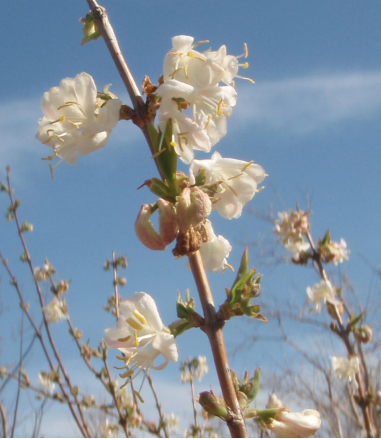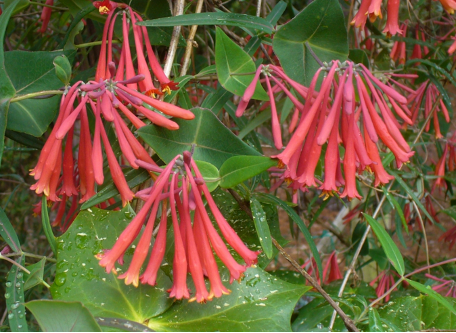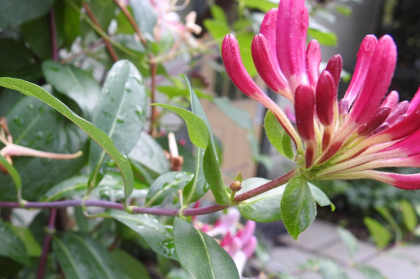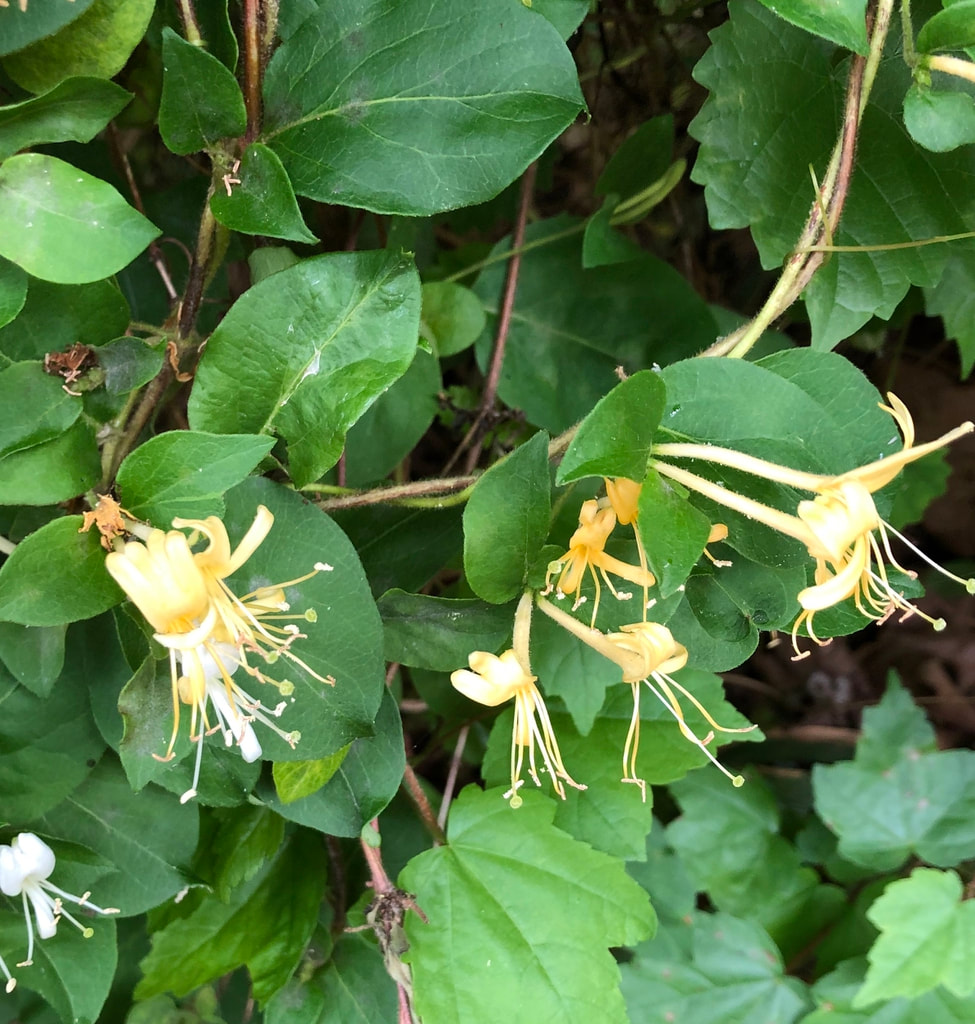|
By Matt S., Pitt County Extension Director and Horticulture Agent Southern gardeners love plants with fragrance and color, a combination that few plants can match as well as honeysuckle. Of course, there is not simply one honeysuckle, rather it is an entire genus of plants that includes a variety of different vines and shrubs. The numerous species and cultivars of honeysuckle offer tremendous diversity. Some offer fantastic floral color, others have fabulous scent, and several bring those characteristics together in a delightful way. Like nearly any genus with such varied members, there are some honeysuckle that are well suited for garden use and others that should probably be avoided.
well as bees and hummingbirds. Native American folklore suggests that the way the individual blossoms cling together in clusters serves as a representation of love and affection. ‘Major Wheeler’ a dark red bloomer, is one beloved variety, while ‘Magnifica’ is a variety with pale yellow blooms.
which has crimson flowers with yellow throats, and ‘Belgica,’ with its purplish-red flowers and bluish-green leaves.
plants.ces.ncsu.eduits flowers are harvested to make teas and other concoctions. Flowers from any type of honeysuckle can be mixed with herbs such as Echinacea to make flavorful medicinal teas. Honeysuckle tea is said to help with headaches, inflammation, fever, and digestion.
Matthew Stevens is the County Extension Director and Horticulture Agent for North Carolina Cooperative Extension’s Pitt County Center. If you have questions about this article or gardening in general, please contact the Pitt County Extension Master Gardener Infoline at 252-902-1705.
0 Comments
Leave a Reply. |
Matt Stevens
Pitt County Extension Director & Horticulture Agent Archives
July 2024
Categories |




 RSS Feed
RSS Feed